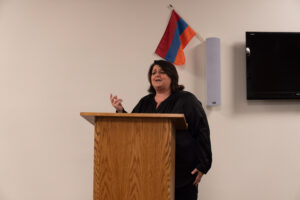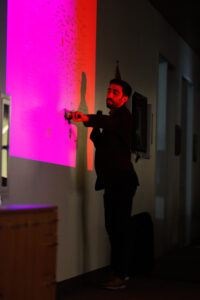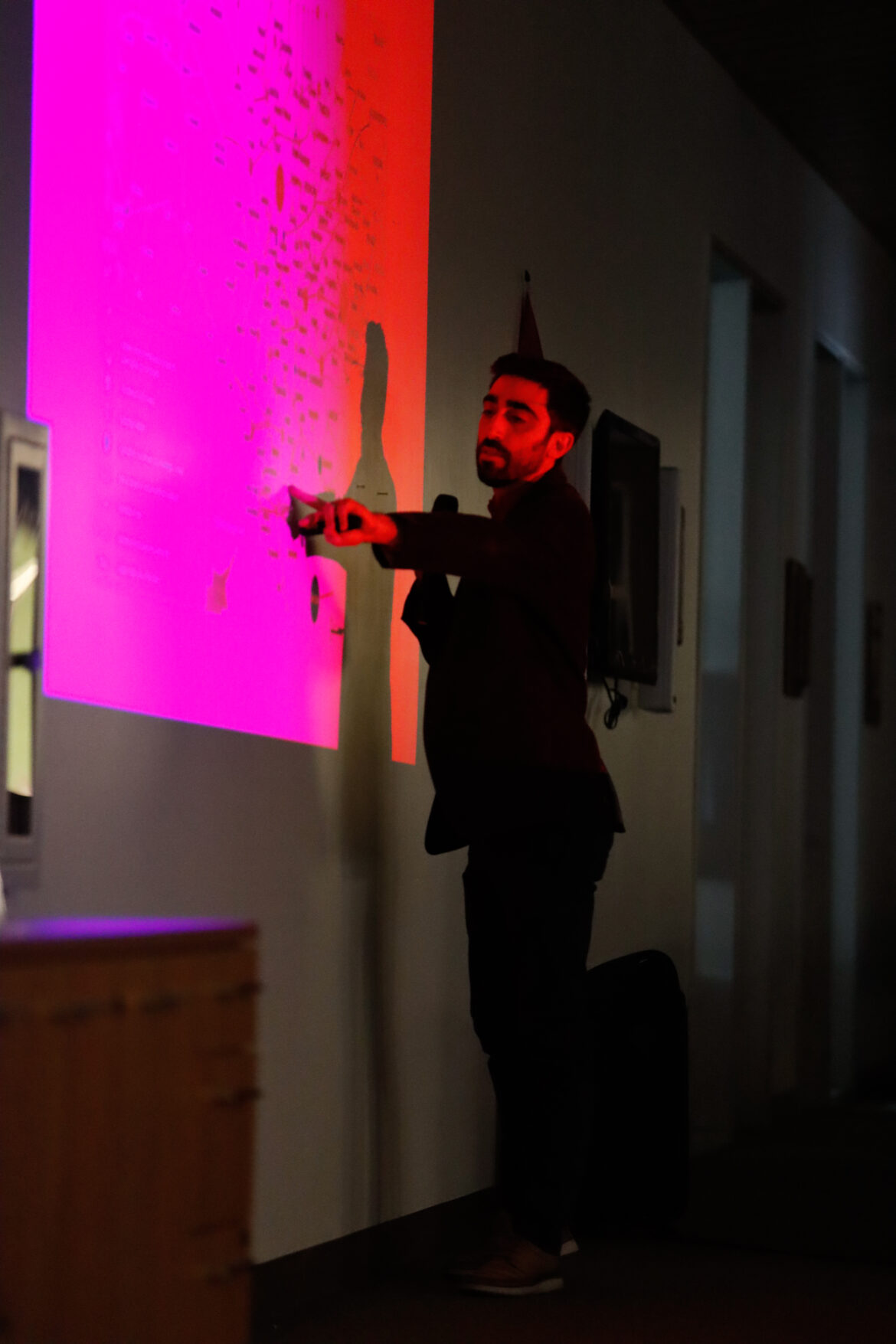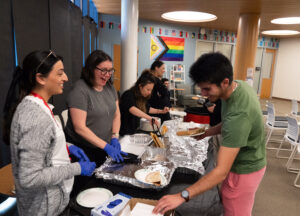Clad in black, the dark-haired woman approached the stage, and her voice resonated throughout the Multicultural Center as she performed two songs, “Andouni” and “Kanche Krunk,” that are about what Armenian musicologist and composer Komitas witnessed during the Armenian Genocide.
Choir Conductor at Pierce Garineh Avakian was one of two guests at the event where she sang in an opera-style the two songs. “Andouni” roughly translates as “homeless” and “Kanche Krunk” as “call of the crane,” according to Avakian.
“He [Komitas] actually went senile after seeing and witnessing the genocide, and these are the songs that he wrote,” Avakian said.

Avakian shared why remembering the Armenian Genocide is important.
“To make the world know that we are a people, and are a people of minority, and have been through a big historical change and have survived,” Avakian said. “The world is a very unjust place to begin with. So just to keep the stories, to keep the culture, the tradition alive amongst the new generations is kind of a responsibility on every single Armenian to carry the torch into the future.”
The Armenian Genocide started in early 1915 during World War I (1914-1918), which included the deportation and mass killings of Armenians in the Ottoman Empire carried out by the Young Turks movement. Conservative estimates put the death toll between 600,000 to 1 million Armenians, according to Britannica.
Many Armenians were first rounded up and hung in the streets of Constantinople (now Istanbul) and later would be deported to the desert where many would die or be killed en-route, according to Yale University.
The event resulted from the Ottoman Empire’s defeat in the battle of Sarikamish against the Russian Empire in January of 1915, where the Young Turks shifted the blame of the loss to the Armenians, according to Britannica.
Manuk Avedikyan from the USC Dornsife Institute of Armenian Studies started the event by presenting a lecture of the genocide and how its effects extend beyond the events in World War I, and the complications faced in Anatolia for Armenians after the end of the war.
Avedikyan’s lecture also focused on the storytelling of the Armenian experience beyond the genocide in California, and encouraged people to share stories of Armenian people through USC Dornsife Institute of Armenian Studies’ resource base, My Armenian Story.

Avedikyan said Los Angeles is the center of the Armenian Diaspora.
Admissions and Records Evaluation Technician Isabelle Tranner attended the event because of the importance the Armenian community has in Los Angeles and to reflect.
“I’ve never heard our instructor Gaga perform, so that was really fun to hear,” Tranner said. “I definitely learned from the lecture more of the timeline of the genocide. Something that stuck with me was the transnationalism of the Armenian people and how the genocide and the displacement has displaced people around the globe, but how then how a lot of people seem to end up in Los Angeles.”
The United States officially recognized the Armenian Genocide on April 24, 2021, when President Joe Biden through a press statement acknowledged the event as a genocide, in addition to two congressional resolutions.
Avedikyan had two messages primarily directed at Armenian students, which can also be applied to anyone.
“Try to continue that memory through your own personal story,” Avedikyan said. “Especially for the Armenians students, in whatever you do to be the best in what you do and try to include something Armenian through your work.”






